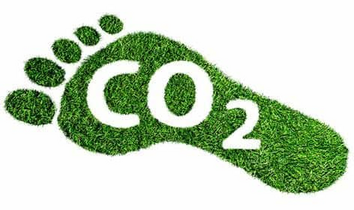
– Keeping it low and eco –

What does that mean???? It means that this website is cleaner than 97% of all web pages globally, only 0.03g of CO2 is produced every time someone visits this web page. Rating from WebsiteCarbon.com.
The Carbon Footprint of Digital Activity
Digital technologies, while intangible in nature, have a tangible environmental impact. Every online action—whether streaming a video, sending an email, or hosting a website—requires electricity, which in turn contributes to carbon emissions. This environmental cost is measured using the concept of a carbon footprint.
A carbon footprint (also referred to as a greenhouse gas footprint) represents the total volume of greenhouse gases (GHGs) emitted directly and indirectly as a result of a specific activity or product. Emissions are standardized and expressed as carbon dioxide equivalents (CO₂-eq) to account for the varying global warming potentials of different gases.
Measurements are typically reported per:
• Unit of time (e.g., tonnes CO₂-eq per year)
• Unit of consumption (e.g., per kilogram of food or article of clothing)
• Distance traveled (e.g., per kilometer)
• Digital activity (e.g., per page view or file download)
A product's carbon footprint spans its entire life cycle, encompassing raw material extraction, manufacturing, transportation, usage, and end-of-life disposal. This life cycle approach ensures that indirect emissions (also known as Scope 3 emissions) are accounted for alongside direct emissions.
Websites designed with carbon efficiency in mind not only contribute to climate mitigation efforts but also offer a range of practical benefits:
• Reduced Environmental Impact: Lower energy consumption translates to decreased carbon emissions.
• Improved Load Performance: Streamlined digital content enhances website speed and responsiveness.
• Higher Conversion Rates: Fast, efficient websites typically yield better user engagement and retention.
• Inclusive Access: Low-bandwidth-optimized sites are more accessible in regions with limited connectivity, promoting digital equity.
By adopting sustainable web practices, organizations can align technological development with global environmental goals while enhancing user experience.
1. Lightweight Code and Assets
• Minimize HTML, CSS, and JavaScript.
• Compress images and use modern formats like WebP or AVIF.
• Avoid unnecessary animations and third-party scripts.
2. Efficient Hosting
• Prioritize clarity and usability over visual excess.
• Reduce page weight to improve load speed and lower data transfer.
3. Sustainable Content Strategy
• Archive or remove outdated content.
• Use efficient fonts and avoid auto-playing media.
4. Accessibility and Inclusivity
• Design for low-bandwidth environments and older devices.
• Ensure compatibility with screen readers and assistive technologies.

◉ Website Carbon Calculator – Estimate your site’s emissions and get tips for improvement.
◉ Lowwwcarbon Showcase – Explore real-world examples of beautifully designed, low-carbon websites.
◉ Hey Low – A studio that builds fast, sustainable websites powered by renewable energy.
◉ EarthDay.org – Environmental movement, working with more than 150,000 partners in over 192 countries.